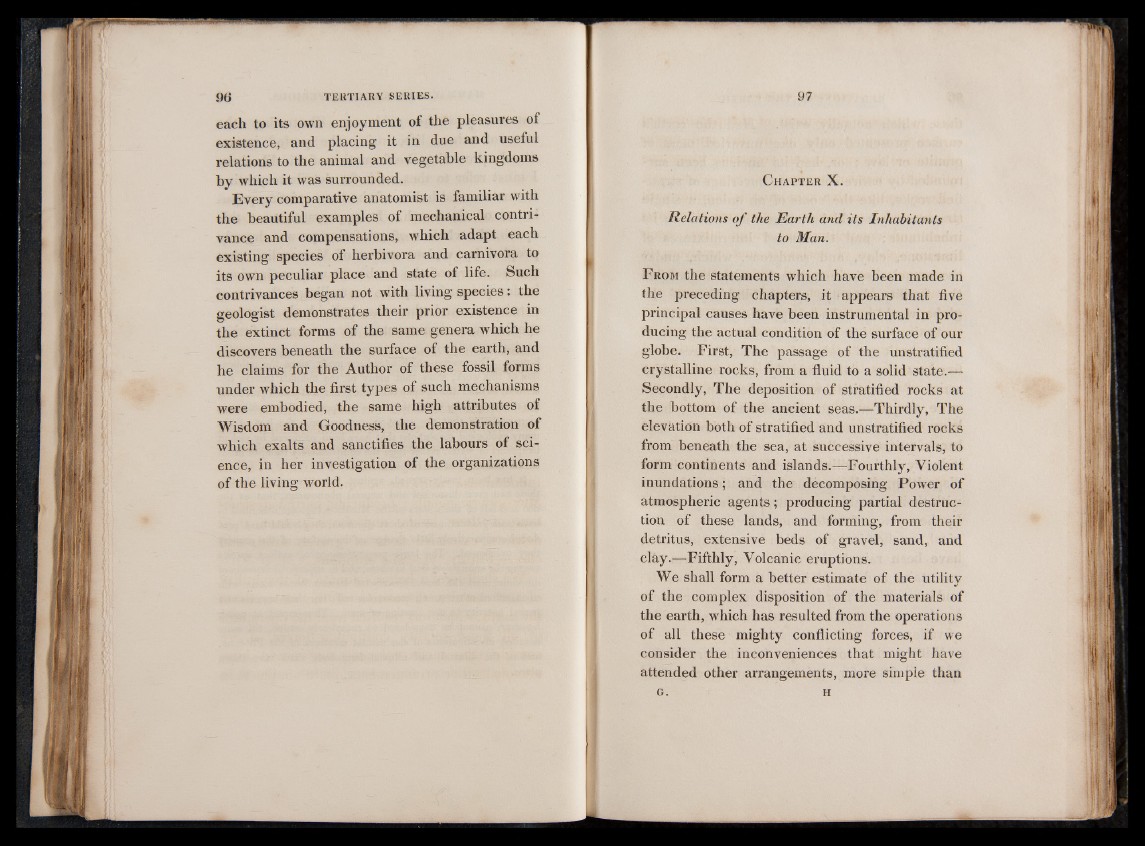
each to its own enjoyment of the pleasures of
existence, and placing it in due and useful
relations to the animal and vegetable kingdoms
by which it was surrounded.
Every comparative anatomist is familiar with
the beautiful examples of mechanical contrivance
and compensations, which adapt each
existing species of herbivora and carnivora to
its own peculiar place and state of life. Such
contrivances began not with living species : the
geologist demonstrates their prior existence in
the extinct forms of the same genera which he
discovers beneath the surface of the earth, and
he claims for the Author of these fossil forms
under which the first types of such mechanisms
were embodied, the same high attributes of
Wisdom and Goodness, the demonstration of
which exalts and sanctifies the labours of science,
in her investigation of the organizations
of the living world.
Chapter X.
Relations o f the Earth and its Inhabitants
to Man.
From the statements which have been made in
the preceding chapters, it appears that five
principal causes have been instrumental in producing
the actual condition of the surface of our
globe. First, The passage of the unstratified
crystalline rocks, from a fluid to a solid state.—-
Secondly, The deposition of stratified rocks at
the bottom of the ancient seas.— Thirdly, The
elevation both of stratified and unstratified rocks
from beneath the sea, at successive intervals, to
form continents and islands.— Fourthly, Violent
inundations; and the decomposing Power of
atmospheric agents; producing partial destruction
of these lands, and forming, from their
detritus, extensive beds of gravel, sand, and
clay.—Fifthly, Volcanic eruptions.
We shall form a better estimate of the utility
of the complex disposition of the materials of
the earth, which has resulted from the operations
of all these mighty conflicting forces, if we
consider the inconveniences that might have
attended other arrangements, more simple than
G. H